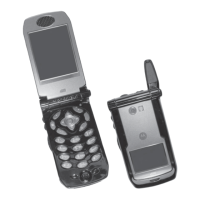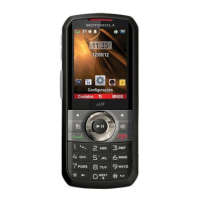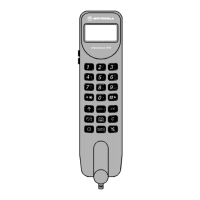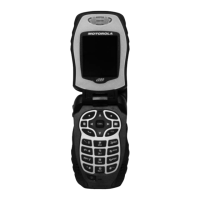OVERVIEW: iDEN Digital Modulation Technology
Frequency from Desired Channel Center (kHz)
Figure 1-1: Spectrum of iDEN Quad 16QAM
Quadrature Phase Shift Keying (QPSK) is one of the most common modulation techniques for satellite
communications. In QPSK, a digital data stream is taken two bits at a time to generate four possible phase
states of the transmitted carrier. A characteristic of this technique is its resistance to noise.
Time Division Multiple Access (TDMA) is used to allocate portions of the RF signal by dividing time into 6
slots, one for each unit. Time allocation enables each unit to transmit its voice information without
interference from another unit’s transmission.
Transmission from a unit or base station is accommodated in time-slot lengths of 15 milliseconds and frame
lengths of 90 milliseconds (see Figure 1-2).
Note that Rx (outbound) indicates base-to subscriber transmissions; Tx (inbound) indicates
subscriber-to-base transmissions. The slots are paired and have a fixed offset of 19 milliseconds; their
timings are synchronized by the iDEN system. The TDMA technique requires sophisticated algorithms and
one digital-signal processor (DSP) to perform voice compression/decompression and RF
modulation/demodulation

